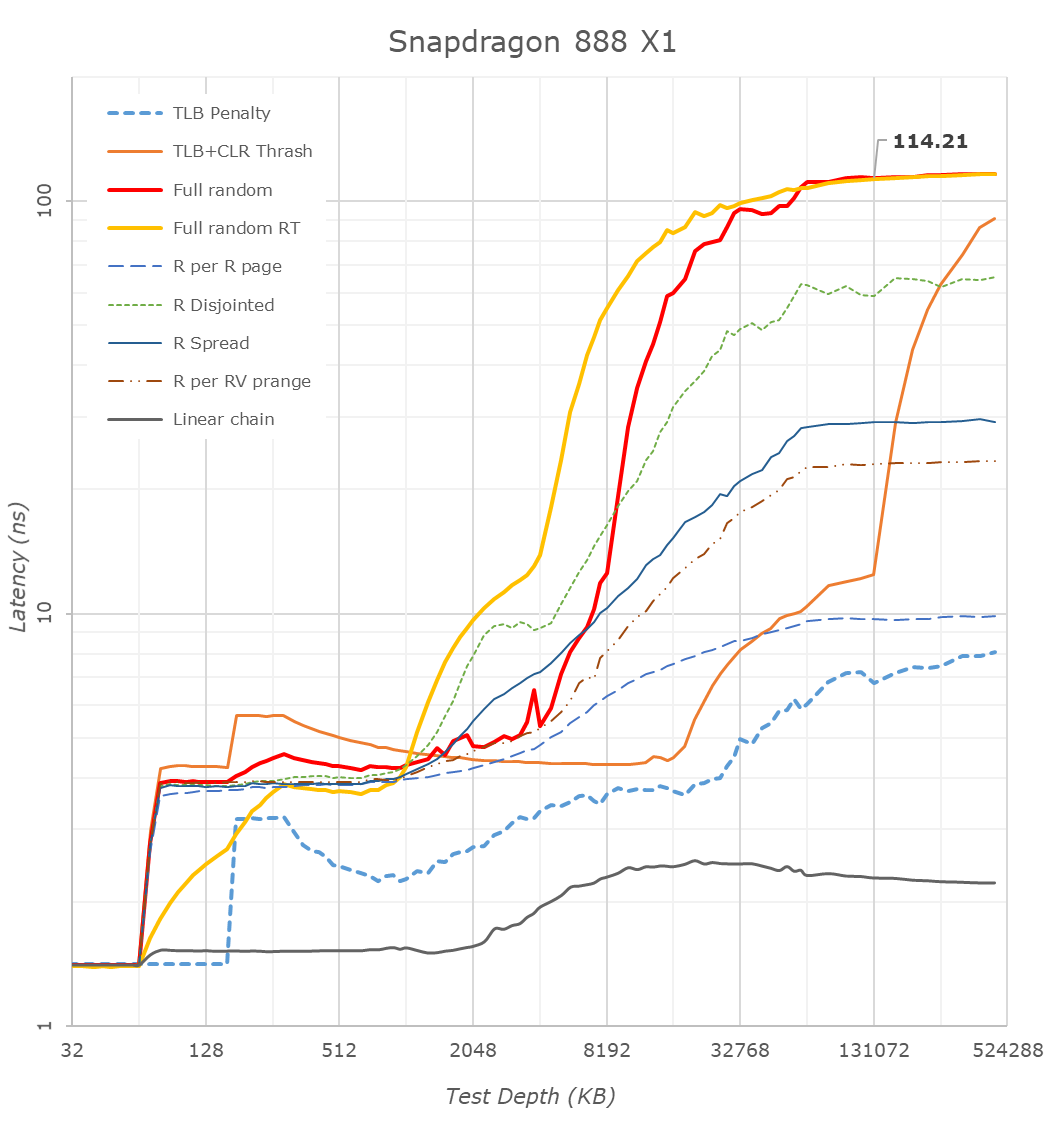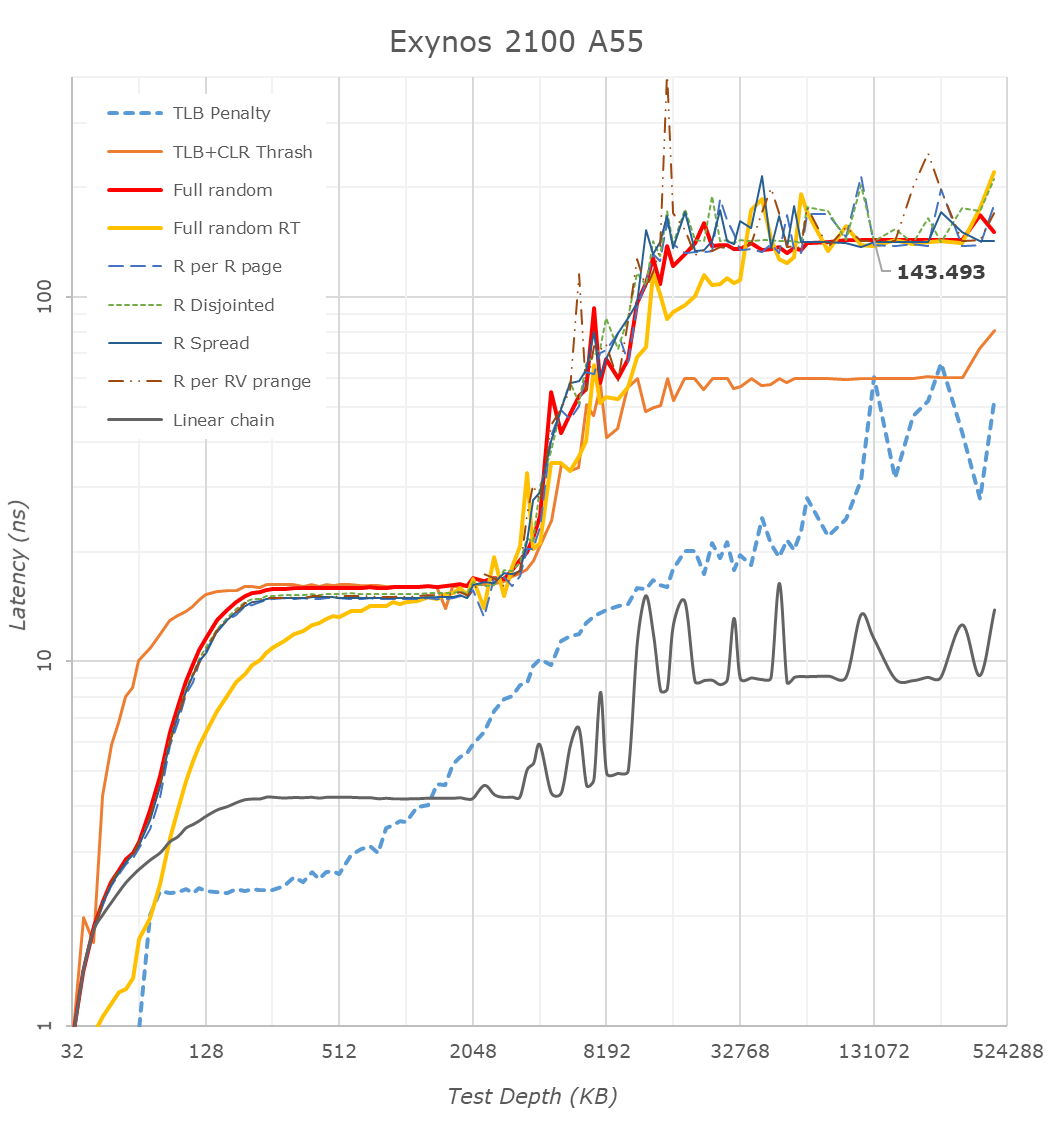The Snapdragon 888 vs The Exynos 2100: Cortex-X1 & 5nm - Who Does It Better?
by Andrei Frumusanu on February 8, 2021 3:00 AM EST- Posted in
- Mobile
- Samsung
- Qualcomm
- Smartphones
- SoCs
- Snapdragon 888
- Exynos 2100
Memory Subsystem & Latency: Quite Different
The memory subsystem comparisons for the Snapdragon 888 and Exynos 2100 are very interesting for a few couple of reasons. First of all – these new SoCs are the first to use new higher-frequency LPDDR5-6400 memory, which is 16% faster than that of last year’s LPDRR5-5500 DRAM used in flagship devices.
On the Snapdragon 888 side of things, Qualcomm this generation has said that they have made significant progress in improving memory latency – a point of contention that’s generally been a weak point of the previous few generations, although they always did keep improving things gen-on-gen.
On the Exynos 2100 side, Samsung’s abandonment of their custom cores also means that the SoC is now very different to the Exynos 990. The M5 used to have a fast-path connection between the cores and the memory controllers – exactly how Samsung reimplemented this in the Exynos 2100 will be interesting.
Starting things off with the new Snapdragon 888, we are seeing some very significant changes compared to the Snapdragon 865 last year. Full random memory latency went down from 138ns to 114ns, which is a massive generation gain given that Arm always quotes that 4ns of latency equals 1% of performance.
Samsung’s Exynos 2100 on the other hand doesn’t look as good: At around 136ns at 128MB test depth, this is quite worse than the Snapdragon 888, and actually a regression compared to the Exynos 990 at 131ns.
Looking closer at the cache hierarchies, we’re seeing 64KB of L1 caches for both X1 designs – as expected.
What’s really weird though is the memory patterns of the X1 and A78 cores as they transition from the L2 caches to the L3 caches. Usually, you’d expect a larger latency hump into the 10’s of nanoseconds, however on both the Cortex-X1 and Cortex-A78 on both the Snapdragon and Exynos we’re seeing L3 latencies between 4-6ns which is far faster than any previous generation L3 and DSU design we’ve seen from Arm.
After experimenting a bit with my patterns, the answer to this weird behaviour is quite amazing: Arm is prefetching all these patterns, including the “full random” memory access pattern. My tests here consist of pointer-chasing loops across a given depth of memory, with the pointer-loop being closed and always repeated. Arm seems to have a new temporal prefetcher that recognizes arbitrary memory patterns and will latch onto them and prefetch them in further iterations.
I re-added an alternative full random access pattern test (“Full random RT”) into the graph as alternative data-points. This variant instead of being pointer-chase based, will compute a random target address at runtime before accessing it, meaning it’ll be always a different access pattern on repeated loops of a given memory depth. The curves here aren’t as nice and they aren’t as tight as the pointer-chase variant because it currently doesn’t guarantee that it’ll visit every cache line at a given depth and it also doesn’t guarantee not revisiting a cache line within a test depth loop, which is why some of the latencies are lower than that of the “Full random” pattern – just ignore these parts.
This alternative patterns also more clearly reveals the 512KB versus 1MB L2 cache differences between the Exynos’ X1 core and the Snapdragon X1 core. Both chips have 4MB of L3, which is pretty straightforward to identify.
What’s odd about the Exynos is the linear access latencies. Unlike the Snapdragon whose latency grows at 4MB and remains relatively the same, the Exynos sees a second latency hump around the 10MB depth mark. It’s hard to see here in the other patterns, but it’s also actually present there.
This post-4MB L3 cache hierarchy is actually easier to identify from the perspective of the Cortex-A55 cores. We see a very different pattern between the Exynos 2100 and the Snapdragon 888 here, and again confirms that there’s lowered latencies up until around 10MB depth.
During the announcement of the Exynos 2100, Samsung had mentioned they had improved and included “better cache memory”, which in context of these results seems to be pointing out that they’ve now increased their system level cache from 2MB to 6MB. I’m not 100% sure if it’s 6 or 8MB, but 6 seems to be a safe bet for now.
In these A55 graphs, we also see that Samsung continues to use 64KB L2 caches, while Qualcomm makes use of 128KB implementations. Furthermore, it looks like the Exynos 2100 makes available to the A55 cores the full speed of the memory controllers, while the Snapdragon 888 puts a hard limit on them, and hence the very bad memory latency, similarly to how Apple does the same in their SoCs when just the small cores are active.
Qualcomm seems to have completely removed access of the CPU cluster to the SoC’s system cache, as even the Cortex-A55 cores don’t look to have access to it. This might explain why the CPU memory latency this generation has been greatly improved – as after all, memory traffic had to do one whole hop less this generation. This also in theory would put less pressure on the SLC, and allow the GPU and other blocks to more effectively use its 3MB size.












123 Comments
View All Comments
geoxile - Monday, February 8, 2021 - link
What are you smoking? https://www.tomshardware.com/news/iphone-6s-a9-sam... the Samsung 14nm made A9s had a 10% advantage.Spunjji - Monday, February 8, 2021 - link
Yeah, I think a lot of us had suspicions that was the case, but this is really confirming it. Interesting implications for Nvidia's next gen.yeeeeman - Monday, February 8, 2021 - link
Crap, pure crap samsung. Qcom can do better on the same node with the same CPU IP. Pathetic. And people are still enthusiastic about rdna chip from samsung. If this is hot with Mali, then the one with rdna will be a toaster.lmcd - Monday, February 8, 2021 - link
Honestly, this chip is probably on the rushed side. There was probably some work sunk into switching from the mongoose-series cores. I think Samsung will improve next generation substantially. I'm not surprised this generation they did not match Qualcomm, though I'm a bit surprised it's quite so decisive.yeeeeman - Monday, February 8, 2021 - link
Yes, most certainly that is true. Also, it seems like the node is holding them up quite a lot also and I think the thermal characteristics of the Samsung process vs TSMC are worse since both the SD888 and Exynos exhibit very bad behavior in regards to this. The previous SD865 is much better in this regard with TSMC 7nm even though that chip is also quite pushed to its limits.Basically, process is critical. Anyone can say whatever it wants, but process tech is critical for failure or success. We have so many examples in the industry that show this. Intel with its 14nm vs AMD with 7nm TSMC. AMD could not have done the things they have with GF12nm. That is absolutely certain. Nvidia has just moved to Samsung 8nm from TSMC 12nm and ... it shows. The new cards are hot and power hogs. Samsung needs to invest lots of R&D in their fabs because their customers have given them a leap of faith this time and if they feel they lose too much with it, they will avoid samsung in the future.
Exynos_is_weak - Monday, February 8, 2021 - link
Lmao this is the exact same statement made by Samsung fans every single year and we know how it turned out. Oh "Exynos 990 will be revolutionary" or "Exynos 9825 will kick ass" and so on and so for. Now they are hedging their bets on AMD GPUs. And when that's subpar, they will fabricate another pathetic excuse. Come on aren't you guys tired of blindly defending Samsung?anad0commenter - Monday, February 8, 2021 - link
Personally, I will keep hoping "the next Exynos is the one!" because I don't have a choice. In Europe it's only exynos and no snapdragon in their phones.Wereweeb - Monday, February 8, 2021 - link
Why not buy an Oneplus phone then?druzzyaka - Monday, February 8, 2021 - link
Because of OneUI.Thats why I bought HongKong version of S10. This phone still feels premium, despite being 2 year old.
s.yu - Tuesday, February 9, 2021 - link
I agree, currently on a Vivo, and noticed that OneUI is much better.